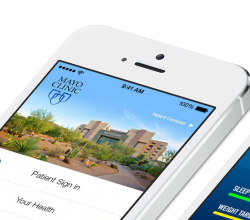My last post was about the coming medical megatrends that will have transformative implications for medical practice. To continue the discussion, let’s begin with genomics.
Little more than a decade ago, most people had never heard of the word “genomics;” today it is used frequently. It is indeed a revolutionary science that is and will transform medical research and medical care. To better understand how this new science will markedly change medicine, it is convenient to consider it through a few categories:
Pharmacogenomics
Nutragenomics
My last post was about the coming medical megatrends that will have transformative implications for medical practice. To continue the discussion, let’s begin with genomics.
Little more than a decade ago, most people had never heard of the word “genomics;” today it is used frequently. It is indeed a revolutionary science that is and will transform medical research and medical care. To better understand how this new science will markedly change medicine, it is convenient to consider it through a few categories:
Pharmacogenomics
Nutragenomics
Disease classification
Disease prognostication
Early and rapid diagnosis
Prediction of diseases to develop later in life
Pharmacogenomics, the topic of this posting, can itself be subdivided into
Drug creation and development
Drug prescribing to achieve greater efficacy and fewer side effects
The concept of drug development using genomics is to “target” a specific function in the cell, usually an enzyme that is the proximate culprit in a disease process. Here is an example using chronic myelocytic leukemia.
Chromosomes occasionally break apart but the cellular repair mechanisms put them back together. Chromosomes are basically long sections of DNA with collections of multiple genes. One chromosome, #22, carries a normal gene known as BCR. We all have it, it is normal. Another chromosome, #9, carries a gene called ABL (and usually pronounced as “abel”.) As with BCR, we all have it and it is an important normal gene called a tyrosine kinase.
Imagine that some of Chromosome #22 breaks off such that a portion of the BCR gene comes with it. At the same time, Chromosome #9 breaks leaving ABL exposed at the end. Now, instead of the repair mechanisms putting the two pieces back where they came from, instead, the two pieces are “translocated” so that now the piece of the BCR gene is attached to Chromosome #9 next to ABL. This effectively creates a new fusion gene which we will call BCR-ABL. This additional material on the ABL gene is enough to change its active site such that it launches a cascade of additional proteins that cause continuous cell division thereby creating chronic myelocytic leukemia. This single leukemic cell divides without control until eventually the disease is manifested.
The concept of “targeted therapy” is to find a compound that blocks the action of this new abnormal protein without affecting other normal tyrosine kinases. As it turned out, Novartis had a compound on the shelf, created for other purposes, which fit the need. It binds to the BCR-ABL protein’s active site and effectively stops it from working. The cell now dies a normal death and the leukemia is rapidly brought under control with very limited side effects, especially as compared to the major side effects of cancer chemotherapy. Gleevec (imatinib,) the first of a number of now available targeted BCR-ABL tyrosine kinase inhibitors, has been very successful and has dramatically changed the approach to this otherwise fatal disease.
This is an example of knowing the gene that is abnormal, then finding its abnormal protein product and then finding or creating a compound that blocks its action, targeted to just that abnormal enzyme. Other examples to date have mostly been in the cancer field such as Herceptin (trastuzumab) for breast cancer. In the coming years there will be a wellspring of new compounds developed as the underlying genomic basis for many diseases are unraveled.
Genomics can be used not just to develop new drugs but to make the prescribing of drugs more effective and safe. Albuterol is a drug used for acute episodes of asthma. It works for most people but there are a few where it works less well and some where it has no effect at all. The problem is that the prescribing physician has no idea whether an individual patient will respond or not. Too bad for the non-responsive patient who does not discover this until during an attack in the middle of the night. The reason for non response is straight forward. Albuterol is inhaled and binds to a specific site, called a beta adrenergic receptor, on the cells that line the small airways. When this binding occurs, it leads to relaxation of the smooth muscles around the airways, relieving the asthma attack. This receptor is, in turn, created by a gene. In some people there is a “one letter” difference at codon #27 on the gene that codes for this enzyme. This seemingly minimal difference is enough to cause the substitution of the amino acid glycine for the usual arginine in the long chain of amino acids that make up in the beta adrenergic receptor protein. And this is enough that the Albuterol will no longer bind. Since we have two sets of chromosomes, one from Mom and one from Dad, then if one of our parents had this difference, we would still make some of the beta adrenergic receptor but not the full amount. And if both our parents had this different gene, then we would not make any of the typical receptor. So the former people respond somewhat but not fully to albuterol and the latter do not respond at all.
At some point there will be a simple test done in the doctor’s office to check for this occasional difference thus allowing the physician to prescribe a different drug up front.
Just as the doctor does not know if a drug will work or not in an individual patient, he or she does not know if a specific person will or will not have a side effect to a given drug. But if this could be known in advance, adjustments could be made and the side effect avoided. Here is an example with a cancer drug. 6-mercaptopurine (6-MP) is used for children with acute leukemia. The doctor calculates the correct dose based on the child’s height and weight and it is given orally. Normally, it is converted (metabolized) by an enzyme called cytochrome P-450 in the liver. But some people have a much reduced level of this enzyme because of a slightly different gene. When they take a normal dose of 6-MP the drug remains in the blood stream for much longer than usual leading to serious side effects. Now there is a simple test which prevents the child from receiving what could have been a fatal dose of 6-MP.
In the coming years we can expect to learn about new drugs developed using genomic approaches as with Gleevec and Herceptin; tests to advise the doctor as to what drugs will or will not work in a given patient and many new tests to prevent a patient from having an unwarranted side effect. Such is the power of genomics for the future; it will indeed be a revolution.
The next post will continue the discussion of what genomics is doing to change medical practice. There is more on this video








